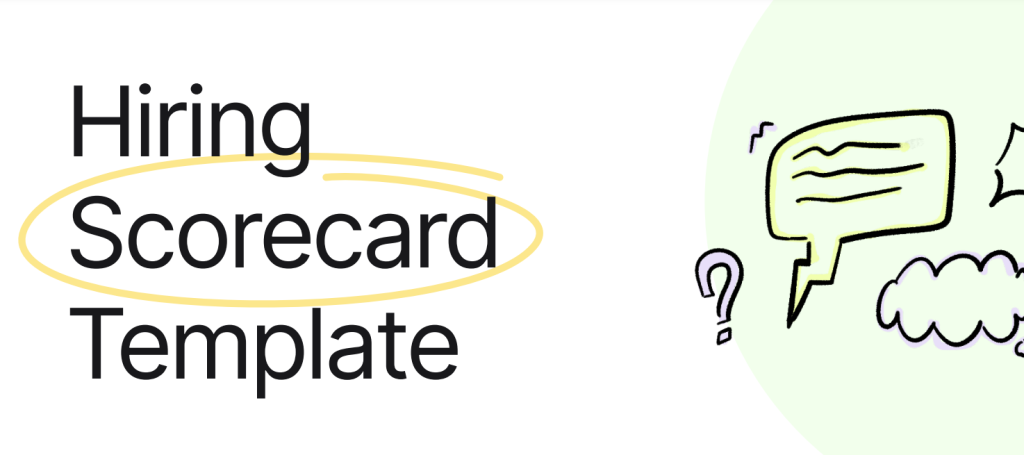Effective talent acquisition strategies to attract great talent
Acquiring talent in 2024 can be a major challenge for some companies. But with a well-thought-out talent acquisition strategy, acquiring great talents becomes easy.
Table of contents
In today’s competitive business world, talent acquisition has become one of the biggest challenges for companies. Finding the right people and drawing them to your organisation can make the difference between success and failure.
In this blog article, we present effective tips to optimise your talent acquisition strategy. Following these steps will help you attract highly qualified professionals to your company.
The importance of a targeted talent acquisition strategy
The importance of a targeted talent acquisition strategy can’t be overstated. At a time when the job market is constantly changing and demands on the skills of employees are increasing, effective recruitment can make the difference between a stagnant business and a thriving one.
It is important to understand that acquiring top candidates isn’t just about filling vacancies. Rather, it is about finding the right people with the right skills and attitude who can contribute to the growth and success of the business.
Also check out our Glossary: What is talent acquisition in HR?
Targeted talent acquisition helps companies achieve their growth objectives. Because recruiting qualified people who share their goals and vision not only increases productivity. It also improves the working environment.
Employees who can identify with the company’s values and goals are often more engaged and motivated in their work. This can lead to higher staff retention and a lower employee turnover rate (a key recruitment KPI for business success). This ultimately helps you save costs and increase efficiency.
Strategic talent acquisition also plays an important role in building and maintaining the employer brand. By hiring talented and committed people, companies can build a positive image that appeals to both clients and potential future team members.
A company that’s known as a great employer attracts more qualified applicants and has more choices when filling vacancies.
Successful talent acquisition helps companies remain competitive. In a fast-paced, technology-driven world where new skills and knowledge are becoming increasingly important, companies that can successfully find and retain the best employees can gain a distinct advantage.
By now, the benefits of great talent attraction are probably clear. But an effective talent acquisition strategy isn’t built in a day. It requires careful planning, research, and the application of effective recruiting techniques. So let’s dive in deeper.
6 effective talent acquisition strategies for successful recruitment
Since finding (and acquiring) candidates is a challenge for many companies, we’ll show you the essential steps for developing a successful talent acquisition strategy.
This way, you can achieve your company’s recruiting goals and manage to find employees without recruiters or headhunters.
New: 5 best recruiting software for small businesses in 2024 [incl. free]!
1. Target group analysis
Let’s start with the basis of your talent acquisition strategy: target group or audience analysis. An effective audience analysis enables you to gain a deeper understanding of the needs, wishes, and expectations of potential candidates.
This, in turn, helps you to successfully address the right candidates.
In the target group analysis, you should not only select specific qualifications and experience of your candidates. It’s also important to take into account other factors such as educational level, personal interests, career goals, and more.
While doing so, always ensure you aren’t discriminating against people in your recruiting process. To find out how to make the selection process unbiased and fair, check out our article fair shortlisting made easy.
These factors can help you optimise your talent acquisition strategy. They can help you create targeted messages that appeal to potential candidates and show them that your company can meet their needs and expectations.
2. Employer branding
Clearly positioning your company as a top employer is also crucial for successful talent acquisition. A great employer brand can help increase your company’s visibility in the labour market. And that, in turn, will help you attract more qualified applicants and attract the best talent.
You should clearly define and communicate what the benefits are for employees to work in your company, such as flexible working hours, training opportunities, attractive compensation packages, or great company culture.
3. Using the right acquisition channels
Various recruiting channels have proven to be particularly effective in the acquisition of employees. These include online job boards, career fairs, social media, and networking events.
Online job boards such as Indeed or LinkedIn offer a broad platform to advertise job ads and reach a wide range of candidates. They’re particularly useful for reaching active job seekers, but can also get your job ads in front of passive candidates.
The downside is that you need to set up an account with the relevant online job board for each job posting. This is not only time-consuming but also requires some organisation.
This is where the right tools, particularly talent acquisition software solutions, can help. For an overview of what these tools are and their top features, check out our beginner’s guide: What is talent acquisition software? Your guide for 2024.
One such tool is JOIN, the free solution to post your jobs to multiple job sites with just one click. This maximises the visibility of your ads and saves time and effort.
Another effective recruiting channel is to attend career fairs. These allow you to build personal relationships with potential candidates. The downside is that they usually require a significant investment of time and resources.
Moreover, social media such as Instagram and Facebook have become increasingly popular as a way to reach out to candidates. They allow companies to showcase their employer brand and build relationships with candidates before a job opening even exists.
The downside is that their effectiveness depends heavily on the quality of your own social media presence and your ability to stand out from the crowd.
4. Active sourcing
Active talent sourcing is the proactive approach to recruitment where recruiters actively seek out potential candidates rather than just waiting for applications to come in.
You can use most of the acquisition channels mentioned above for this, such as online job boards or attending career fairs.
But active sourcing can be particularly useful in reaching passive candidates. Passive candidates are skilled professionals who may not be actively looking for a job, but are open to new opportunities.
To implement a successful active sourcing strategy, companies should first clearly define what skills, qualifications, and experience they’re looking for. Using tools such as LinkedIn or XING can help identify suitable candidates.
Once you identified a potential talent, it’s time to reach out to them. It’s important to send a personalised message tailored to the candidate.
This message should show you recognise their experience and potential, while also showcasing your company. Make it clear why they may be of interest to you, while also emphasising why they should be interested in your organisation.
Need more help sourcing? Check out our article how to source candidates (for free): 10 sourcing strategies!
5. Talent pooling
Talent pooling, on the other hand, refers to building and maintaining a database or ‘pool’ of talent. In there, you keep people who have shown an interest in your company or whose skills and experience might be a good fit for your organisation.
It’s another tried-and-tested talent acquisition strategy that should be part of your process.
By building relationships with these talents and engaging with them on a regular basis, you can create a pipeline of potential candidates. Later, you can easily refer to them when a suitable vacancy arises.
Maintaining and engaging talent pools is also critical to long-term success in employee acquisition. This can be achieved through regular communication, such as newsletters or updates about the company.
You could also encourage interactions in other, more personal ways. For example, inviting people to networking events, meet-ups, or providing opportunities for learning and development.
6. Employee referrals
Employee referral programs are another effective employee acquisition strategy. They use the networks of your existing employees to find qualified candidates and attract them to your organisation.
These programmes can be particularly effective because your employees become brand ambassadors for your company. They often turn out to be the best in giving recommendations to potential candidates in their network.
Employee referral programs also help improve employee satisfaction, as they let your employees actively contribute to the development of the company. In some cases, being able to work with a friend will also tie an employee more closely to the company. This in turn can help boost employee retention.
An example of an employee referral is to offer incentives such as bonuses to your employees if their referrals lead to successful hires.
Everything you need to grow your team
With these tips and strategies, you should now be ready to develop your own successful talent acquisition strategy. This will empower you and your business, allowing you to start recruiting talented professionals right away.
With a well-thought-out employee acquisition strategy, you can successfully recruit new employees for your team even in times of labour shortages. Want even more help? Check out these resources:
Mia Worts
Mia Worts is a Junior Content Marketing Manager at JOIN. Finding solutions for companies to increase their employee retention in a sustainable way is one of her favorite topics to write about. Not only does she care about the future of work but also about creating a sustainable life aside from the job world by cooking animal-free foods and choosing sustainable alternatives.


